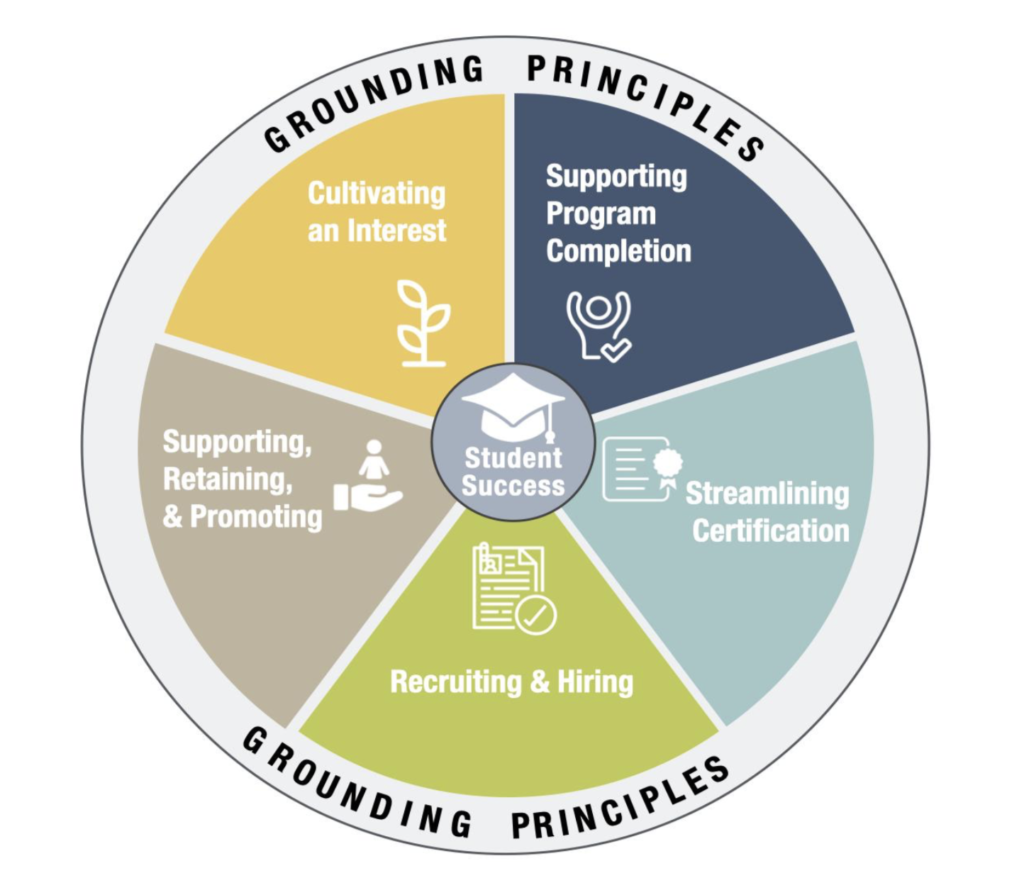DEW Collaborative: Regional Landscape Snapshot
A growing body of research demonstrates the positive impacts of teachers of color on short- and long-term academic outcomes of all students. For students of color, the research finds that having just one teacher of color at any point between kindergarten and third grade can boost academic achievement, high school graduation rates, and college enrollment rates (Dee, 2004; Gershenson, 2018). Nationally, students of color represent 50% of total public K-12 enrollment, and by 2060, that number will climb to 66%. Yet, people of color currently make up only 20% of the educator workforce (National Center for Education Statistics, 2018). The imperative is clear: A racially, ethnically, and linguistically diverse educator workforce is vital to closing the inequitable gaps that persist between students of color and their White peers.
In August 2021, the Great Schools Partnership, with support from the Barr Foundation, launched a new regional effort: the Diversifying the Educator Workforce (DEW) Collaborative, which seeks to translate recommendations detailed in a recent report: Increasing the Racial, Ethnic, and Linguistic Diversity of the Educator Workforce.
The DEW Collaborative will use the framework presented in this report, which outlines five key areas necessary to build a more diverse educator workforce across the region: (1) cultivating an interest in becoming an educator, (2) supporting completion of educator preparation program, (3) streamlining certification, (2) recruiting and hiring diverse educators, and (5) supporting, retaining, and promoting diverse educators.
As a critical first step, the DEW Collaborative set out to document the current landscape of the region, including identifying diversification efforts already underway in each of the six New England states, documenting the current policy context, and gathering a range of demographic data metrics about the current educator workforce pipeline. This Regional Landscape Snapshot summarizes key findings from the landscape mapping process and is intended to serve as a resource that can help inform and accelerate efforts to diversify the educator workforce across New England.
How are we defining educator?
We are using the most inclusive definition of educator, which includes any school or district staff who are involved in students’ educational experience (e.g., paraprofessionals, teachers, counselors, interventionists, administrators).
Have questions about this report? Email Danielle Pierre, Senior Associate: dpierre@greatschoolspartnership.org.
Interested In Learning More? Let’s Talk.
Personalized, equitable, and student-centered education is too important to put aside. Together, we can improve learning for all your students.
Contact Us